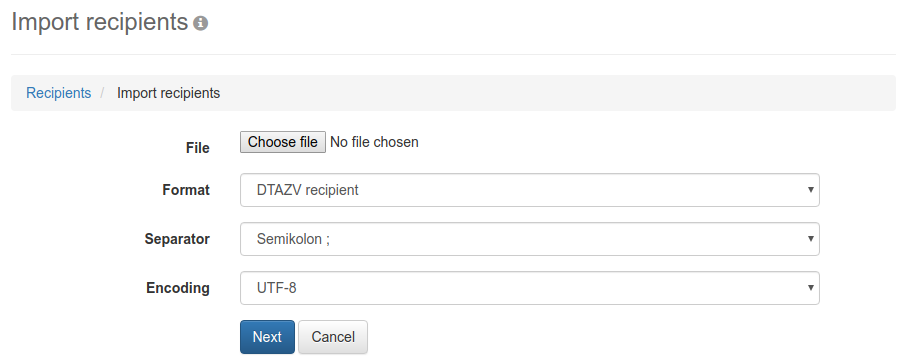
Figure: Form for importing recipients
In addition to the methods described in section Recipients, recipients can also be directly imported from external files. This process supports the formats CSV and Excel. You can import SEPA, DTAZV and MT101 recipients, as well as SEPA mandates.
Please note that already existing data records are not imported again. Moreover, lines with invalid bank data are not imported. As it is the case when recipients and payments are entered manually, bank data is also verified during import procedures. However, this can be disabled in the preferences under Payment recording. Independently of this, bank codes and BIC IDs are always checked for a valid format.
Enter the path and filename of the file to be imported. By clicking the Choose file button, the dialog box of your operating system opens, which you can use to navigate to the file on your local or network drive.
The drop-down list gives you a choice of the formats DTAZV, MT101, SEPA and SEPA mandate.
Please select the delimiter from the drop-down list that will be used by the CSV file.
You only need to select an encoding (character set) if you have selected a CSV file that contains special characters, such as äöü or €. In many cases, however, even if you keep the default empty value, the conversion is still correct. Common values for the encoding are ISO-8859-15 and UTF-8.

Figure: Form for importing recipients